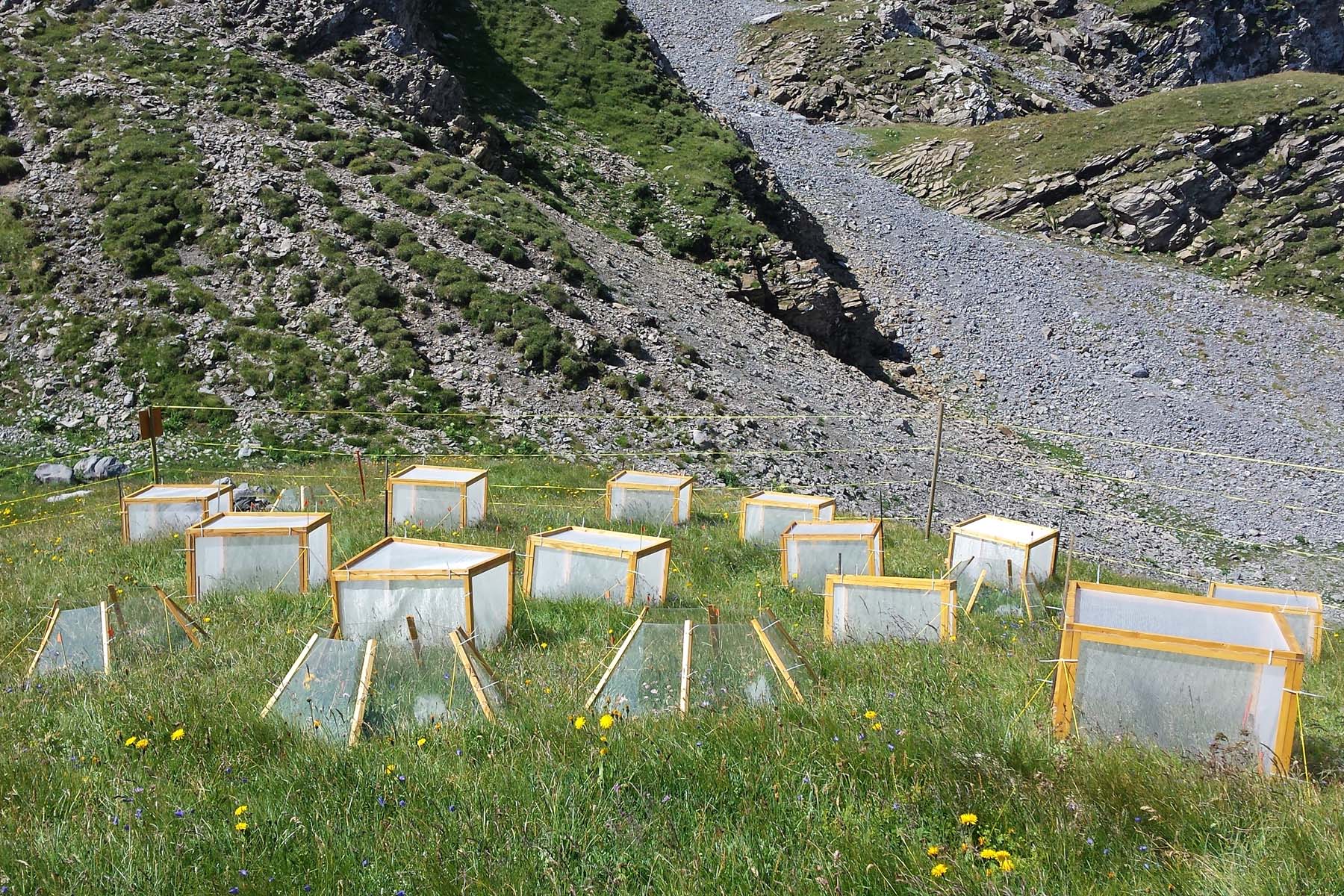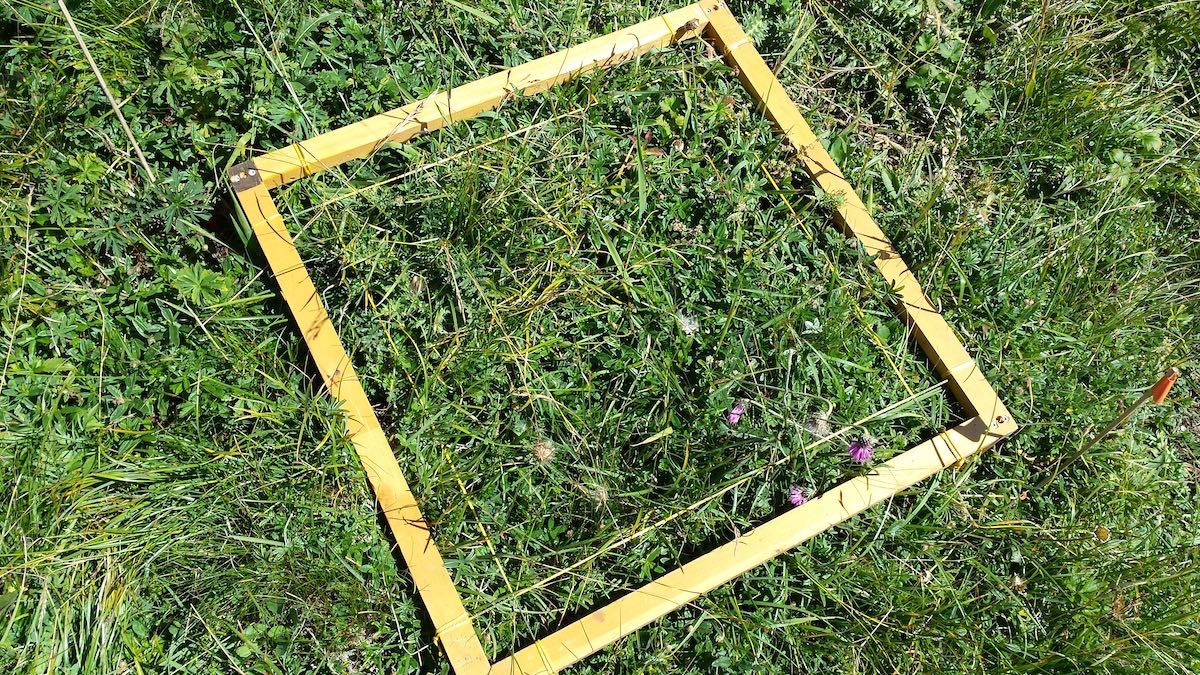ClimHerb
Response of Alpine Plant Communities to Biotic and Abiotic Changes
Species persistence in ecosystems is mitigated by shifts in abiotic and biotic conditions due to climate changes. Many herbivores, such as butterfly larvae or grasshoppers, are shifting their distribution poleward and to higher elevation in response to climate changes. As a consequence, climate changes may induce new interactions between plant and herbivore species that never co-occurred or lead to evolutionary shifts in the functional traits of species. However, shifts in trophic interactions across trophic levels have been poorly investigated and may play a primary role in how community will be impacted by climate change.
The ClimHerb project aims at understanding how alpine plant communities respond to (1) increased herbivore pressure and changes in biotic interactions, and (2) changes in abiotic conditions under climate changes. To address these questions, we manipulated abiotic and biotic conditions in a small scale controlled field experiment on three alpine meadows situated along an elevation gradient (1800m, 2100m, 2300m) in the Swiss-Prealps.
Publications
Descombes et al.: Plant physical and chemical traits associated with herbivory in situ and under a warming treatment, Journal of Ecology, 2019, doi: external page 10.1111/1365-2745.13286
Descombes et al.: Uneven rate of plant turnover along elevation in grasslands. Alpine Botany, 2017, doi: external page 10.1007/s00035-016-0173-7
Descombes et al.: Community‐level plant palatability increases with elevation as insect herbivore abundance declines. Journal of Ecology, 2016, doi: external page /10.1111/1365-2745.12664
Descombes et al.: Simulated shifts in trophic niche breadth modulate range loss of alpine butterflies under climate change. Ecography, 2015, doi: external page /10.1111/ecog.01557

